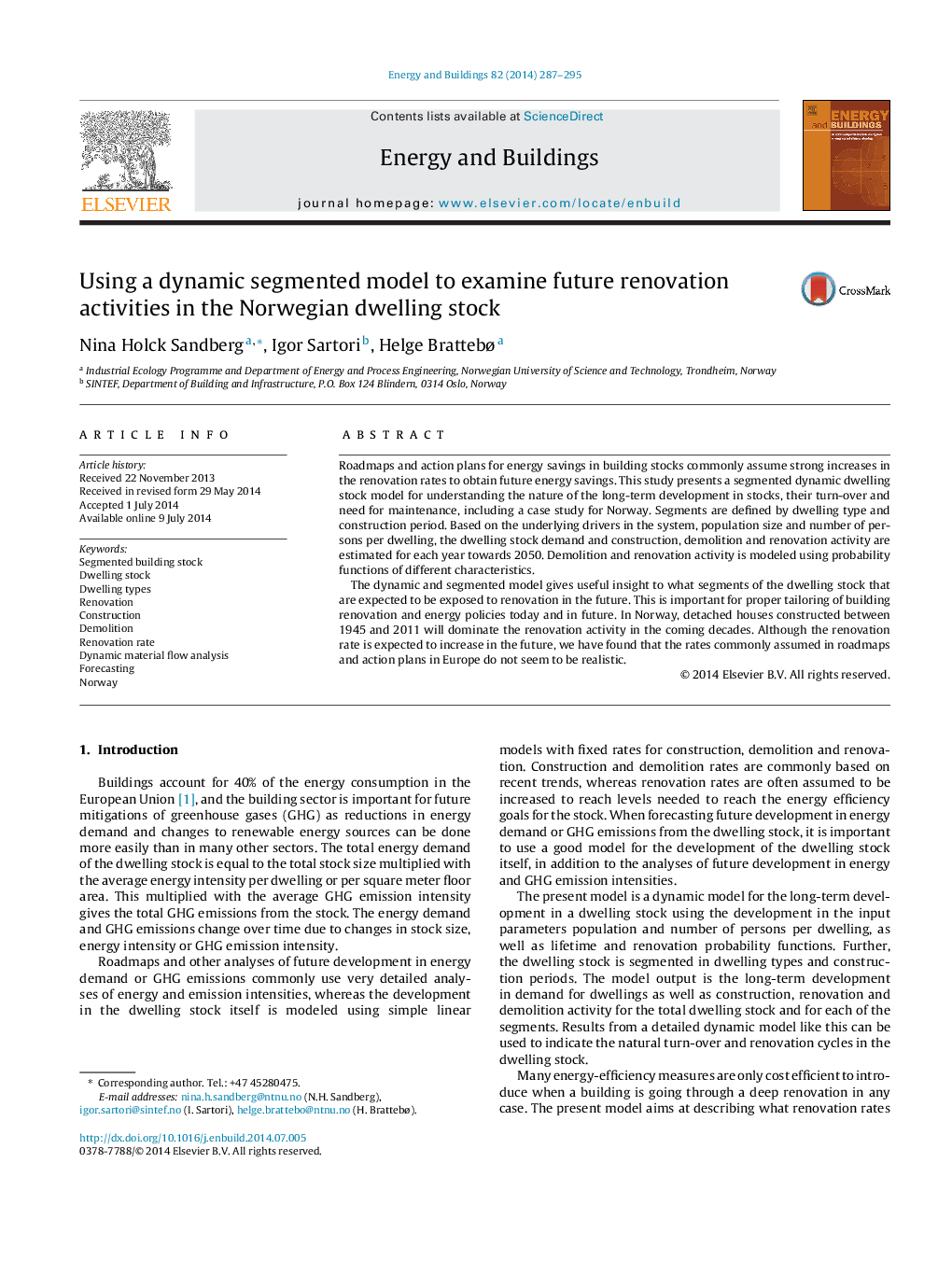| Article ID | Journal | Published Year | Pages | File Type |
|---|---|---|---|---|
| 262670 | Energy and Buildings | 2014 | 9 Pages |
•We develop a dynamic and segmented dwelling stock model using MFA principles.•The model describes the dwelling stock's natural turn-over and need for maintenance.•Long-term demand for dwellings, construction, renovation and demolition estimated.•Renovation rates in Norway are not expected to increase to levels commonly assumed.•Segmented model results show what segments are expected to be renovated and when.
Roadmaps and action plans for energy savings in building stocks commonly assume strong increases in the renovation rates to obtain future energy savings. This study presents a segmented dynamic dwelling stock model for understanding the nature of the long-term development in stocks, their turn-over and need for maintenance, including a case study for Norway. Segments are defined by dwelling type and construction period. Based on the underlying drivers in the system, population size and number of persons per dwelling, the dwelling stock demand and construction, demolition and renovation activity are estimated for each year towards 2050. Demolition and renovation activity is modeled using probability functions of different characteristics.The dynamic and segmented model gives useful insight to what segments of the dwelling stock that are expected to be exposed to renovation in the future. This is important for proper tailoring of building renovation and energy policies today and in future. In Norway, detached houses constructed between 1945 and 2011 will dominate the renovation activity in the coming decades. Although the renovation rate is expected to increase in the future, we have found that the rates commonly assumed in roadmaps and action plans in Europe do not seem to be realistic.
